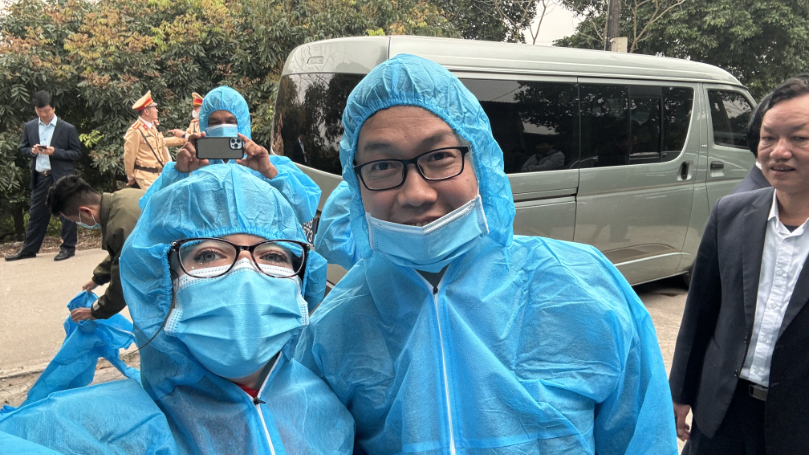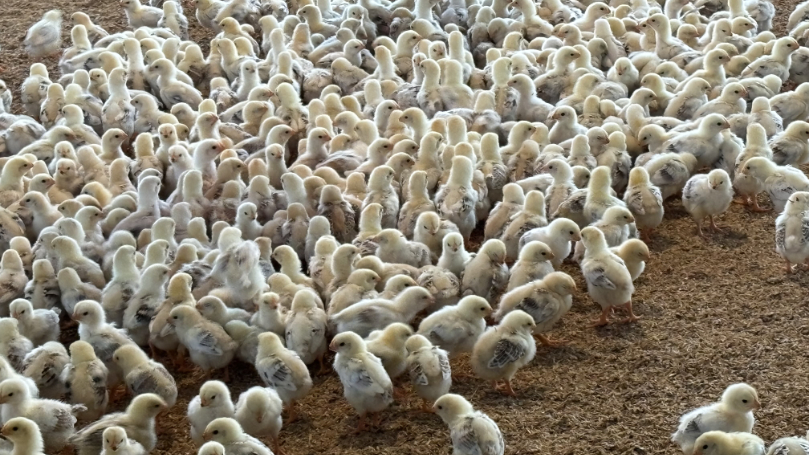
I am not an expert in Vietnamese agricultural collectives. I am simply an American who visited Hà Nội for two weeks, and had the privilege to eat the local food, and learn about farming systems from leaders in the Communist Party of Vietnam (CPV).
In the spring of 2024, a Communist Party USA Hello Comrade program delegation of twelve comrades went to meet with and learn from the Communist Party of Vietnam in Hanoi. On the final day of our official visit, we had the honor of traveling to Hung Yen Province to discuss agricultural collectives with Standing Vice Secretary of the Provincial Party Committee, Comrade Tran Quoc Toan and Comrade Son, who we had met earlier that week with the Vietnam Union of Friendship Organization.
From these two knowledgeable comrades and the owner of the farm himself, we learned a lot about how collectivized farming works in Vietnam. All farms in the country are owned by individual families or farming collectives, about 70% of the working class works in agriculture, and 90% of people belonging to one of Vietnam’s ethnic minorities are farmers. The particular farm we visited produces grapefruit (flowers and fruit), oranges, bananas, and guava in addition to the famous Vietnamese dragon chickens. [Read about our trip to the farm here.]
Agricultural collectives are made of 20-30 families living in the same area. The land belongs to the families, and there is no corporate agriculture, no company owned farmland, and no factory farming in Vietnam. Farmers follow guidelines set by the provincial government around what and when to plant. These guidelines are the result of research by biologists and agriculture experts. The farmers have full self determination over their land, but generally follow guidelines because they respect the science, and they have seen that this leads them towards having a successful season.
Most farmers learn planting and harvest skills from their families who have worked the land for centuries and passed down the knowledge. Universities also teach agriculture and farmers can attend to learn more about modern methods. Each Province’s Department of Agriculture provides free training on innovative farming techniques. Sometimes, aspects of farm work are changed or replaced by technology. When this happens, workers are trained by the government in new methods. As new machinery is developed, and certain farm jobs are phased out, there will be a restructuring of jobs on the farm, and workers are retrained for factory or service jobs. Children of farming families often move to the bright lights of the city for education or jobs in other fields, but do often return to the farm. There is good money in food production, and it is a respected industry. This is different from the USA where many traditional farming families are struggling to make ends meet, because the industry has fallen under control of massive corporate monopolies.
Collective farming means that these families share in the good and the bad. Profits and losses are divided evenly among the collective. Negotiated contracts and the ebb and flow of the market determine what is exported and what is sold domestically. Many farms produce the same food products, so these contracts ensure price fairness and equitable distribution.
Households in each collective determine their own leadership structure and work is distributed by skill, not by gender or hierarchy. Certain jobs like butchering are outsourced, so that farmers can focus on growing food and raising livestock.

Farmers in Vietnam are empowered to keep and reuse seed from season to season. This stands in stark contrast to American corporate farming where many seeds are considered intellectual property owned by large chemical companies like Monsanto, and it is illegal for farmers to keep and use seed season to season. Vietnamese farm workers are also taught how to repair their machinery and can buy replacement parts, unlike many American farmers who are currently fighting companies like John Deere for the right to repair their equipment.
Vietnamese agriculture strives to be much more environmentally sustainable than American agriculture. Only bio-organic fertilizers are used, and the county’s agriculture is making moves to become fully organic. There is a national ban on genetically modified organisms (GMO) and hormonal injections of farm animals are illegal. This is, again, very different from the United States where our livestock are injected with hormones to cause bigger and more rapid growth.
Land reform and cooperative farming collectives have evolved through the modern history of Vietnam. During the Revolutionary Period from 1945-1975, land distribution from the bourgeoisie to the working farmers began. By the late 1940s, French and German landlords were abandoning their farmland in the countryside, and this was the first land to be redistributed to the Vietnamese workers.
By 1952, the concept of tenants’ rights was becoming widespread, and publicly owned land started being redistributed to the people. In 1953, the first land reform laws were passed in the North of Vietnam, and 8100 square kilometers of farmland was redistributed from feudal landlords. Now farmers live and work equally in cooperatives. Many of these feudal lords were tortured and killed by farmers rising up against them. Ho Chi Minh personally spoke out against this use of torture. Ho often spoke of how he expected his people to treat their oppressors better than they were treated by those occupying their land. This was his stance throughout the revolutionary period and many American POWs even spoke on how well they were treated by their captors.
After winning the war against the U.S. in 1975 and the reunification of Vietnam, land reform shifted to a subsidizing model with a focus on rebuilding. Le Duan, the country’s leader after Ho Chi Minh, modeled the country’s subsidization after the Soviet model. Farming cooperatives also began in the south at this time, growing to over 11,000 farms. Sanctions placed on Vietnam by the United States after the war made agricultural production difficult, and they had to import one million tons of food every year due to these crippling sanctions.
In 1986, the Doi Moi revitalization began to be implemented, and ushered in the Vietnamese socialist oriented market economy. Agriculture, the most important sector, saw many changes. Land was now collectively owned by all the Vietnamese people, and management overseen by the state. Farming families and collectives could now keep all they needed from their harvest, and sell the rest on the market.
The land use laws were updated in 1993 to reflect the incredible development of Vietnam’s economy. Environmental protections were strengthened. New laws around eminent domains were created. This is when laws banning corporate ownership of farmland were officially put in place to protect Vietnamese farmland for the Vietnamese people.
Food stability is an important goal of Vietnamese agriculture. This stands in stark contrast to the goal of American agriculture: profit. In the United States, over 44 million people are food insecure, including 20% of all American children. Forty five times as many people in the U.S. die of food insecurity yearly as compared to Vietnamese citizens.
Workers struggling under capitalism can learn much from the Vietnamese about a variety of topics, but specifically how to transition our food systems. U.S. factory farming is, like all things under capitalism, profit driven. This leads to disastrous outcomes for consumers. We need look no further than the current outbreak of H1N1 in the USA, caused by the feeding of “chicken litter,” which is simply scat, to dairy and meat cows. This is only done because it is cheap, not because cows normally eat it. Our food system is abusive to animals and unhealthy to humans.
The U.S. food system is not set up in a way to properly feed us, the working class and oppressed citizens. We must meticulously read ingredients lists, struggle to support small, organic farms, and try to eat food that is locally produced. In Vietnam, nearly all food is locally grown, and none is injected with hormones or is genetically modified. Farmers own their means of production, and the goal of food production is to feed people. This seems so simple when seen in action, and it is. We can have a food system that works for the workers and consumers. We only need the political will to make it so.
Images: By Jen W
WORKS CITED
- Feeding America, “Facts About Hunger in America”
- Global Center for Health Security, “Is Chicken Feces Behind the Bird Flu Outbreaks in Cows? Here’s What to Know”
- Luna Oi, “Land Reform in Vietnam” 2022
- NPR, “The Fight Across the Nation for the Right to Repair”
- Pollan, Michael, In Defense of Food, 2008

 Join Now
Join Now